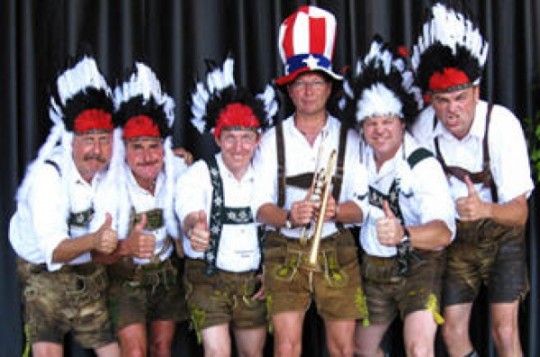This past weekend Ticos all across Costa Rica celebrated the Día de las Culturas, Culture Day. A few OBCR staff from the Communications Office decided to head to the center of Tres Rios to learn more about this interesting celebration. Learn more about this tradition and check out photos and videos from the event!
Christopher Columbus
The arrival of the Spanish in the Americas spawned a new era of cultural exchange.
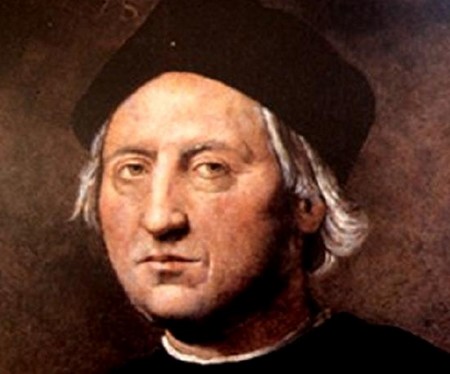
Culture Day originally celebrated the day Christopher Columbus landed in the Bahamas – the first European contact in the Americas. This date, October 12th, is celebrated throughout the Americas as Christopher Columbus day or of a similar concept like that adopted by Costa Rica – Culture Day.
Christopher Columbus first landed in Costa Rica at Cariari (now Puerto Limón), starting the Colonial Era that would give the country it’s current name and bring a whole slew of new customs and cultural views. In Puerto Limón, there is a week-long carnival initially commemorating the Spanish conquest – involving colorful parades, concerts, dancing in the streets, and typical Caribbean foods. The merging of American and European traditions is celebrated all over the Americas – Columbus Day (USA), Dia de la Raza (many countries in Latin America), Discovery Day (Bahamas), Dia de la Hispanidad & Fiesta Nacional (Spain), Día del Respeto a la Diversidad Cultura (Argentina), y Día de las Américas (Uruguay).
Cultural Diversity
Columbus Day in Costa Rica celebrates the differences in all the cultures present in this country. Kids at the CENAC Culture Day festival made clay representations of the diversity present in the Americas.
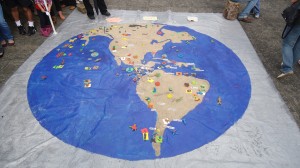
In 1994 Costa Rica officially changed the name of the holiday from Día de la Raza to Día de las Culturas (Day of the cultures) to recognize the mix of European, American, African and Asian cultures that help comprise Costa Rican (and Latin American) culture.
Las Mascaradas
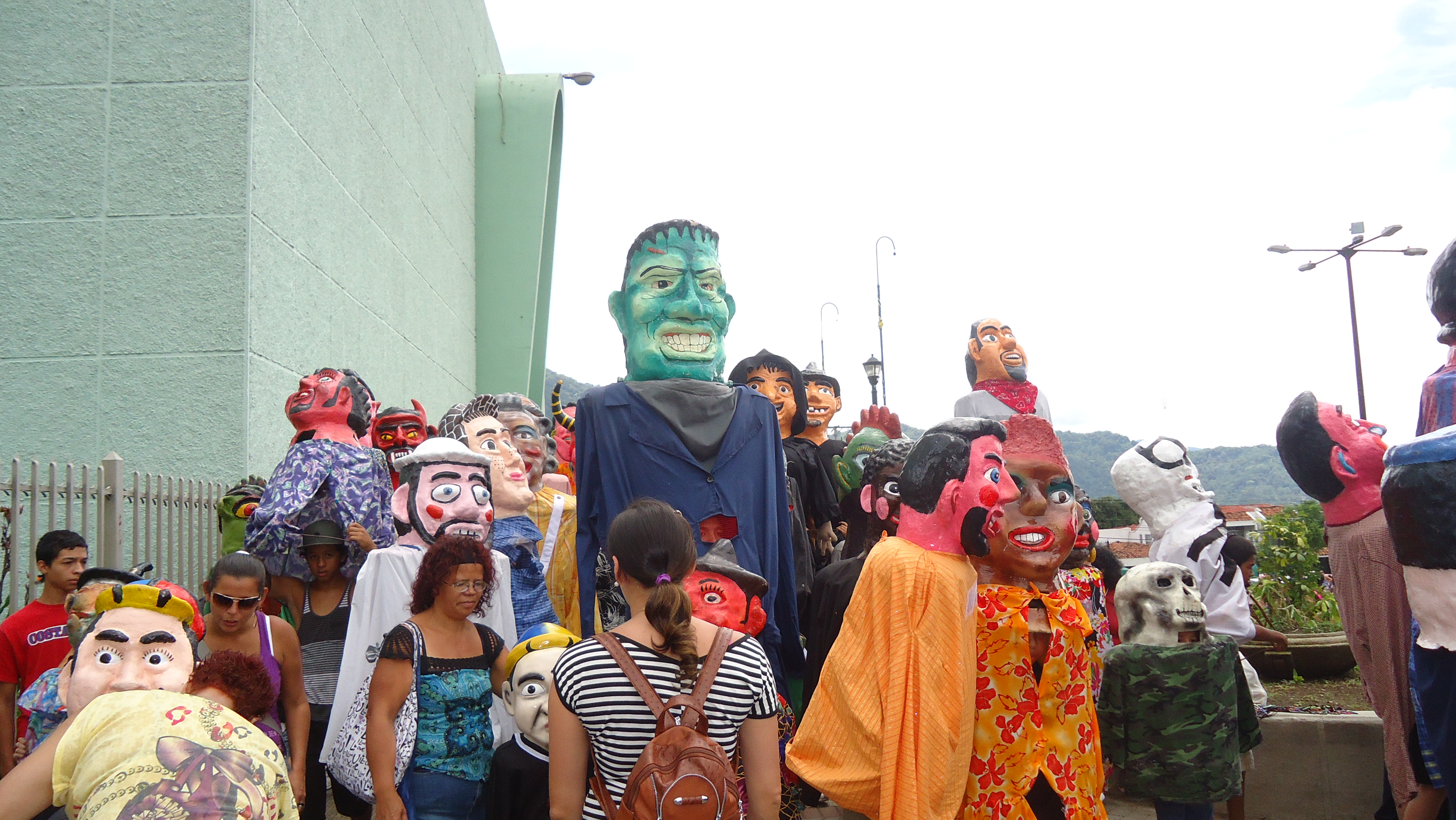
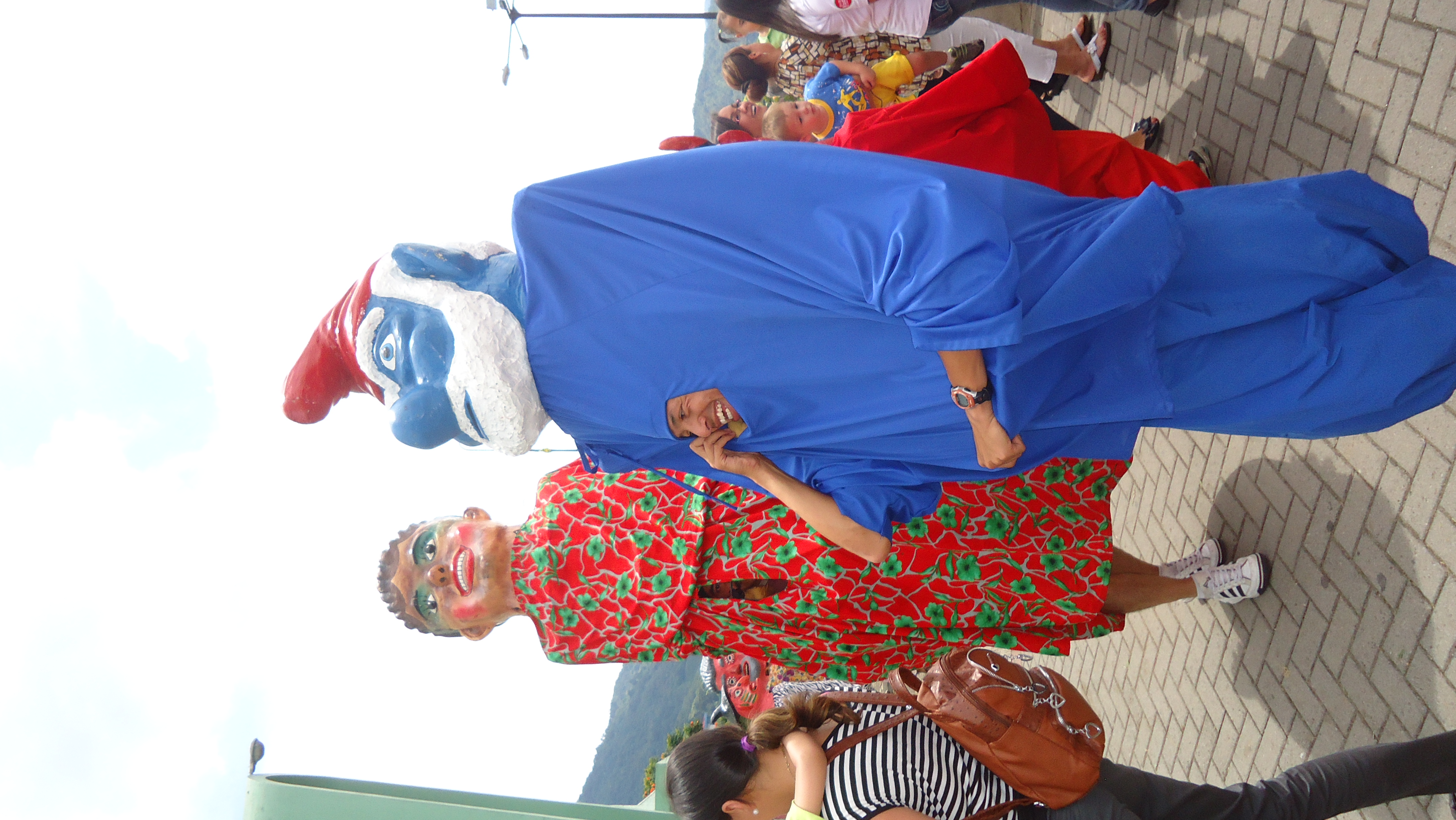
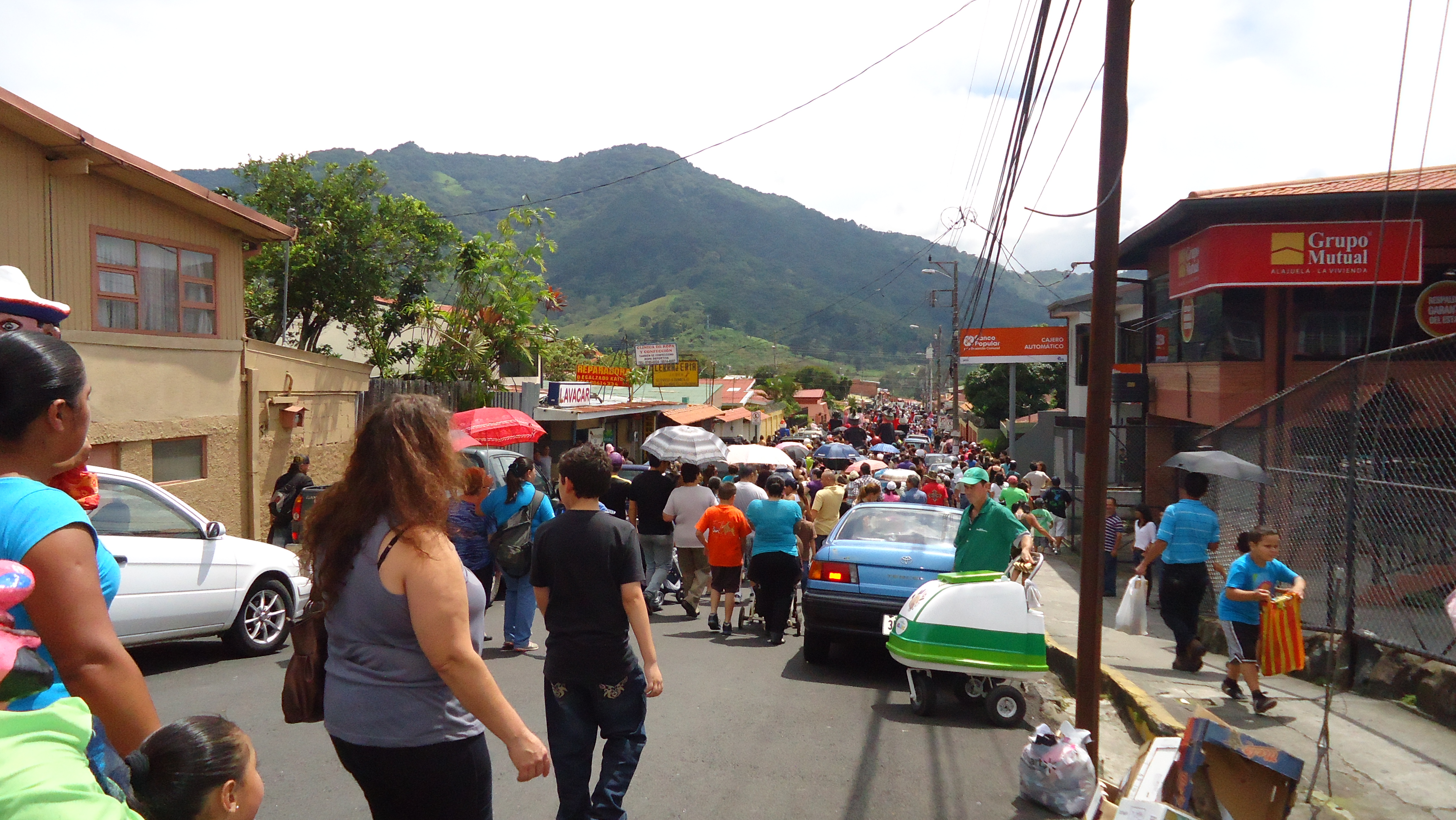
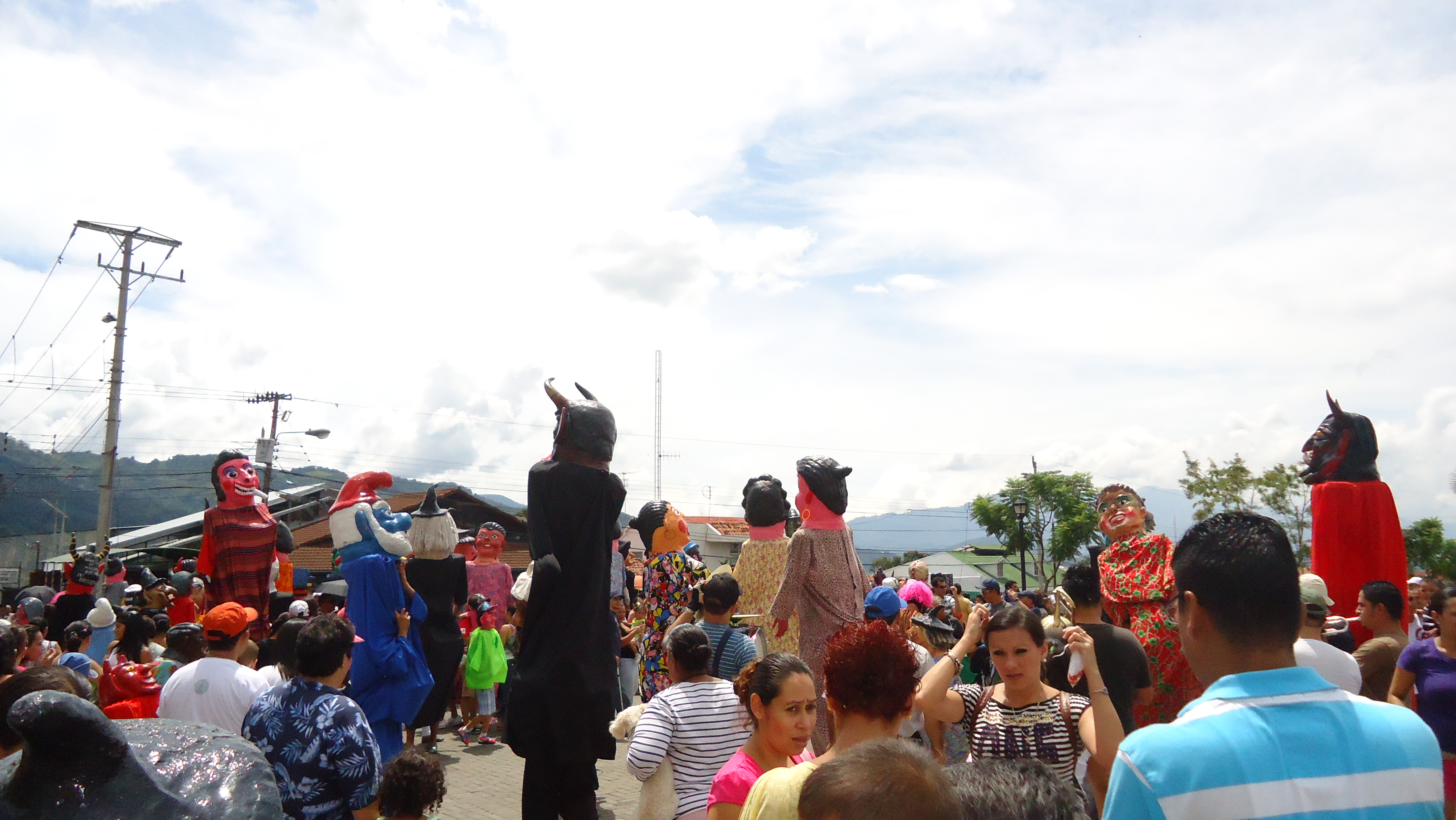
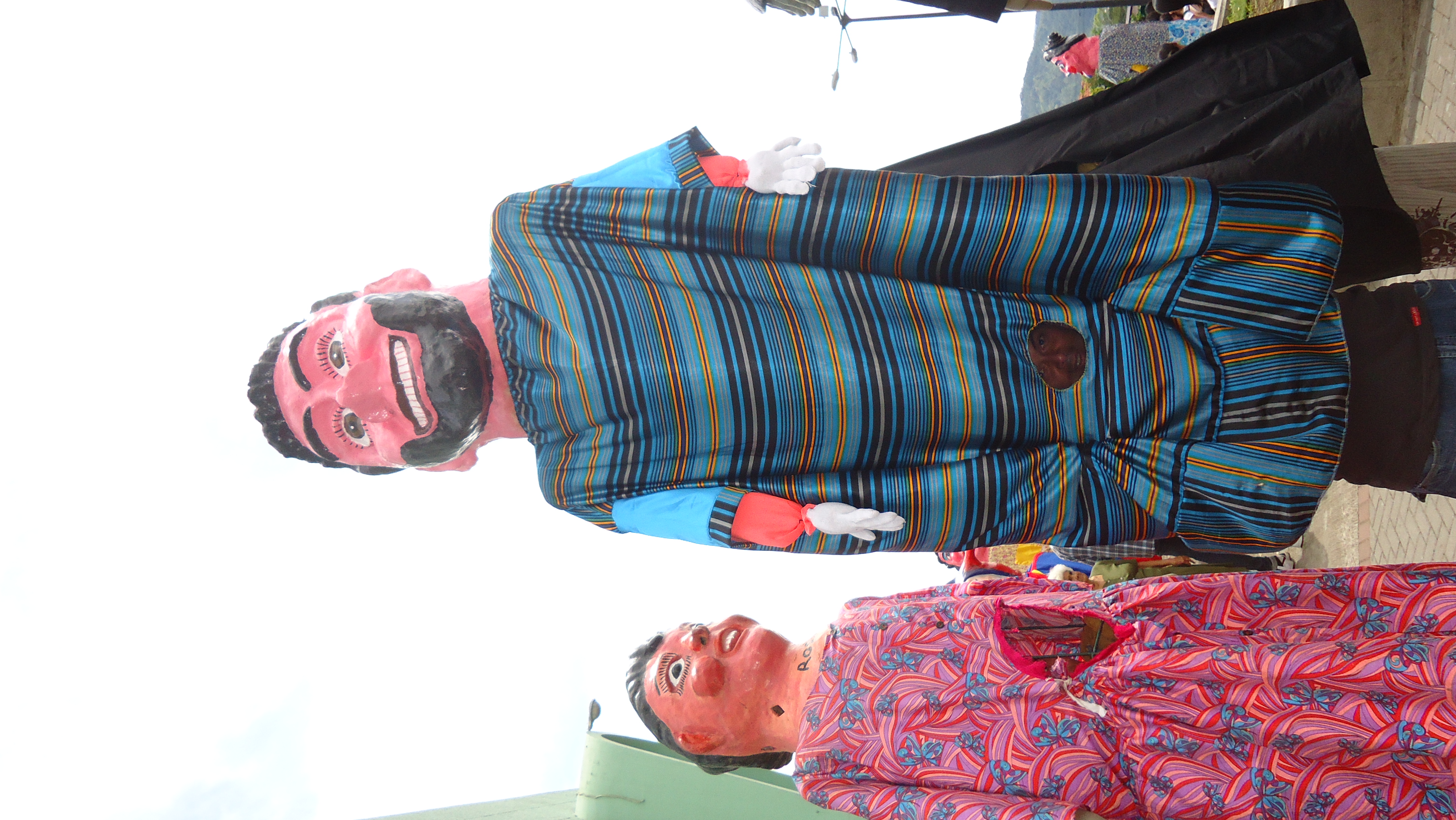

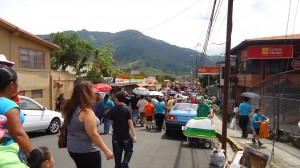
The OBCR Communications staff woke up last Saturday ready to be impressed. We were. We felt like little kids at a Labor Day parade, running up to masked ‘clowns’ with ice cream in hand. We were delighted to experience Una Mascarada up close and in person. La Mascarada translates as the masquerade – a costumed parade of giant masked figures ranging from small grotesque devils to tall comical social figures. These monstrous characters called payasos – translated literally as clowns – run after children, threatening to hit them with socks filled with sand or sawdust. Small towns usually have their own traditional payasos, which they bring out for holidays. The town of Barva de Heredia is famous for this tradition.
The parade starts with two loud firework bangs at high noon to signal the festivities are starting. The local band, una cimarróna, strikes up a beat for the masked characters to bounce around to, playfully chasing kids down the street as a huge crowd makes its way around town. The word cimarróna originates from the Spanish word for “wild”. It typically consists of a trumpet, saxophone, cymbals and drums. On October 31st, there is a Mascaradas celebration in the tiny town of Barva de Heredia to celebrate Día de Los Muertos – we’re excited to check it out!
The Lion’s Dance
CENAC held an all-day festival celebrating different cultures present in Costa Rica
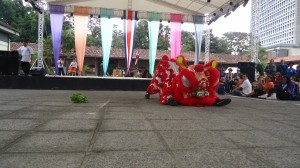
To help celebrate the melting pot of customs, the Centro Nacional de la Cultura (CENAC) held an all day festival with dancing and music with roots in places as far away as China. One dance that the staff here at OBCR had a chance to see was the Danza de León – The Lion’s Dance. Our video shows the “cai ching” (採青 – “Plucking of the Greens”) ceremony of the Lion’s Dance. Normally this ceremony is completed during New Years celebrations and is seen as good luck when a dance troop is able to find and get the head of lettuce from difficult to reach places. The head of lettuce would be attached to a red envelope with money inside – money which competing dance troops from different martial arts schools would duel over to reach. We were very happy to be exposed to this little bit of culture from the East.
Interested in learning more?
Check out Jane Koutnik’s Culture Smart Costa Rica
University of Costa Rica professors Bozzoli Vargas, María Eugenia, Ibarra Rojas, Eugenia wrote a book specifically about Culture Day – 12 de Octubre: Día de Los Culturas.
Everybody has their own culture – tell us about yours!
Share with us via Facebook or below how you would celebrate your culture!
